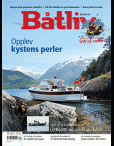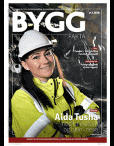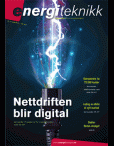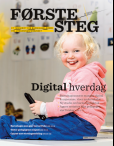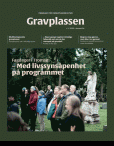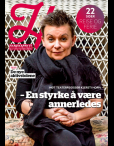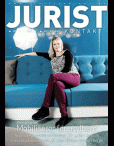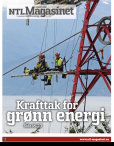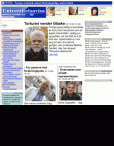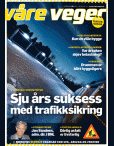Introduction
Accessing finance is one of the most fundamental problems faced by start-ups. They are perceived as riskier (with good reason), they have less collateral to show, and they often have little or no history to convince investors or borrowers that their suggested business model holds potential. Start-ups are also less resourceful, meaning that merely the cost of accessing finance through traditional channels may be prohibitive. If you are based in Oslo, it is surprisingly difficult to go to Bergen and Trondheim to raise financing, as it costs time and money to find financiers, and it is also difficult for the financiers to find potential investment targets.
The last ten years have seen major innovations in the way start-ups can get financing. Cheaper computing power, 12 increased storage, and large increases in communication speed have made it easier to sidestep traditional intermediaries by establishing digital platforms that connect start-ups with potential investors and borrowers. The most prominent examples of such platforms offering disintermediated alternatives to start-up financing are crowdfunding and initial coin offerings (ICOs).
ICOs went from two in 2016 to 37 in 2018 in the Nordics, while equity crowdfunding almost doubled in size. 13 This decade is, however, not the first to have its revolution in terms of financing models. The 1990s brought an equally strong change in the form of venture capital financing. What makes this round different is that many of these new modes of financing are disintermediated. Crowdfunding platforms and firms using ICOs all claim to reduce the use of intermediaries, such as banks or venture capital (VC), and try to connect investors and firms directly with each other. The implicit promise in both forms is that they enable more start-ups to receive funding and hence are valuable both to the parties involved and to society at large.
With this as a point of departure, we set out to answer two main questions: First, do these new forms of start-up funding make it easier for more start-ups to receive financing? Second, does this improvement in financing lead to more success for start-ups?
To address these questions, we first give an overview of the hurdles start-ups traditionally have faced when raising financing, before giving an overview of what the disintermediated alternatives, crowdfunding and ICOs, actually are. Then, we outline benefits and issues with these platform-based models, before tying the strings together to shed light on our two research questions.
The main purpose of this paper is thus to describe these innovations and to analyse their underlying economic mechanisms. While we fully acknowledge that both these new categories of finance are very controversial, and that most countries struggle with how such platforms should be regulated, we intentionally abstract away from such issues here to focus the discussion.
Market Frictions, Credit Rationing and the Funding Gap
Why do we observe this explosion in start-up financing? In this section we will explore the difficulties surrounding start-up financing in more detail and will explain how these innovations can solve some of the issues present in current financing models.
The standard explanation for the difficulty of obtaining start-up financing is typically centred around so-called market frictions. It is self-evident that start-up investments are very risky and hence difficult to evaluate. Several types of risk are prevalent: first, general (but symmetric) uncertainty about the prospects of a project: Is the market large enough? Are the founders capable of delivering on their promises? Two other problems compound these problems. First, adverse selection: some firms are worse than others (and the entrepreneurs understand at least the quality of their own product). 14 In its most extreme form adverse selection can lead to market failure in the sense that only bad products get sold in the market and that sellers of good products prefer not to enter the market. If there are only few good firms in the market, investors will have problems finding them and might not finance them or lend to them. Such a problem is called credit rationing (see Tirole, 2006).
The second problem is called moral hazard: it describes a situation where after financing is obtained the entrepreneurs might take steps that are not in the investors' best interest. To understand how moral hazard can lead to credit rationing, let us consider the following (extremely simplified) example: an entrepreneur has two projects she can choose from. One project is profitable and carries no risk. The other project breaks even overall, but pays a lot in one state of the world and nothing in the other. If the entrepreneur has enough funds to finance the project herself, she will always choose the riskless and profitable project. If, however, she needs to borrow some money from an investor the investor might refuse to lend it to her. Why? Given limited liability it can be more profitable for her to choose the second project. In that case she would get all the benefits in the better scenario but the investor would bear all the losses in the worse one. 15
The above problem illustrates that firms that have a financially viable product may not receive (debt) financing because of market friction. Hence, there exists a possible funding gap for start-up projects.
Several solutions to this problem are available. Collateral is one. Offering collateral is typically not an option for start-ups, though. Another is for investors to build up expertise in financing risky projects. Instead of investors individually screening investments, banks collect money and build up expertise that helps them sort out bad deals. Also, banks are good at monitoring firms and can thus reduce moral hazard after the financing has been received. This solution is called intermediated finance. 16
Figure 1 An intermediated relationship
A criticism of the banking solution has been that banks are not natural risk takers and tend to finance only very safe firms. In addition, after the recent financial crisis banks have been forced to cut down on lending to smaller firms through more stringent regulation.
A second possible answer to this particular problem is to issue equity. 17 By offering to share the proceeds of an idea with a financier the entrepreneur benefits less from exploiting the financier. From an economic perspective the basic idea of obtaining (equity) financing from (outside) investors is actually centuries (or millennia) old. 18
Venture capital (VC) is a form of finance that combines these two ideas: VC is very good at screening out bad firms and offers firms equity. VC funds are supposed to collect funds from investors to invest in high-risk, high-growth start-ups. Unfortunately, VC financing is not easy to obtain. VC funds tend to be extremely selective in their financing. Anecdotal evidence suggests that about one in a hundred firms received financing. The issue with VC funding is one of scalability as it relies on a unique combination of expertise and capital. 19
The Disintermediate Alternative
As stated above, recent years have seen the rise of new forms of start-up financing. In this section we document this rise and discuss the economic mechanisms that underline this change.
The use of intermediaries in finance was a necessity for a long time as communication and travel made it hard for entrepreneurs to talk directly to large numbers of investors. As mentioned before, the dramatic changes in communication speed in the last decade have eased this particular problem.
Interestingly, the impact of this revolution was first realised by Amazon and eBay for products and by Apple for music. This has enabled a phenomenon called the "long tail" (see Anderson, 2004). The idea here is that not only mainstream projects, say blockbuster movies, can be financed but also projects that cater to niche demands, such as documentaries. Amazon and eBay for retail, iTunes and Spotify for music and Netflix for films are examples of products and firms that earn substantial amounts via the sale of niche products.
Both crowdfunding and initial coin offerings rely fundamentally on the idea of the "long tail" by aggregating demand for risky investments by individuals. The critical difference to the standard forms of financing is that neither of these relies on intermediation in the sense that each investor decides individually about which projects to support rather than outsourcing the investment decision to the intermediary.
Figure 2 A direct financing relationship
The entrepreneurs are in direct contact with potential investors via a platform. A platform is an online meeting point that connects investors and entrepreneurs but does not step in between the two.
Proponents of disintermediated finance, in particular crowdfunding and ICOs, point out additional advantages such as the "wisdom of the crowd", the ability to infer demand before investing and the "platform financing effect" as unique advantages of their approach to financing. We explain these three concepts in turn. Before we do this, we briefly discuss the details of both crowdfunding and ICOs.
How Does Crowdfunding Work?
There are three major forms of crowdfunding, namely product crowdfunding, debt crowdfunding and equity-based crowdfunding. The first type of crowdfunding helps firms to find buyers for current or future products. The last two help firms collect financing, debt or equity directly from investors. Prominent examples of international crowdfunding platforms include Kickstarter and IndieGoGo (product crowdfunding), Funding Circle (debt crowdfunding) and CrowdCube (equity crowdfunding). In Norway, we have examples such as Startskudd by DNB (product crowdfunding), Funding Partner and Kameo (debt crowdfunding) and DealFlow and Around (equity crowdfunding), to mention a few.
The main purpose of crowdfunding platforms is to help individual firms and investors/backers to find each other. To do so, they use a platform. 20 A platform is really just a website where founders advertise their firm and investors can look for new ventures to invest in.
What all the above-mentioned crowdfunding platforms have in common is that they typically provide a meeting point, but do not invest themselves. Instead, investors have a direct relationship with the firms they invest in, replacing banks. This relationship implies that a firm may have multiple lenders, similar to a public bond issue rather than a bank loan. That is, such platforms provide disintermediated alternatives to financing.
The difference to a financial intermediary is that each investor does not invest via the intermediary and is directly exposed to the various risks such investments entail - credit or equity risks.
Funds are raised during "campaigns" that have official ending dates and compete with other campaigns for attention on the platform. Two interesting features are that firms only receive financing if they reach a predefined goal and a first-past-the-post approach meant to encourage investors to commit early.
How Do ICOs Work?
An Initial Coin Offering is a form of financing where an issuer sells a so-called "token" to investors. The issuer assigns to its tokens various economic, voting, participation, consumptive or utilisation rights.
Digital tokens can be split into three major categories: cryptocurrency, utility and security tokens. Cryptocurrencies operate as a medium of exchange for investors, e.g. Bitcoin or Ethereum. Security tokens give the investors the right to some reward based on the firm's results, such as future profits. They rarely include voting rights. This type of token can be seen as an alternative to an initial public offering. Most financial regulators restrict the issuance of security tokens and hence security tokens are rarely issued. tZero is an example of a security token. These tokens have been distributed only among accredited investors. The investors will receive a portion of future profits related to the use of their trading system and each tZero token represents a stake in the company.
In contrast, utility tokens provide access to a service or a product the issuer will provide. In that sense, they are more akin to product crowdfunding. Unlike currency tokens, which act as a means of payment that is external to the token platform, utility tokens can only be used in a platform's native network. They grant access to the services available on the token issuer's platform. Moreover, utility tokens do not provide any passive profits, either financial or monetary. No ownership or control rights are attached to utility tokens. Most tokens are utility tokens partially because of the lenient regulations. Cappasity is an example of a utility token. The main business is selling hosting and software support for 3D/VR content for online shopping. Their tokens support a marketplace for buying and selling 3D/VR digital assets.
Most tokens can be traded in a secondary market after the conclusion of the ICO. Several unregulated or weakly regulated crypto exchanges enable the trade of tokens against other tokens or against fiat currencies. A hybrid token can combine elements from several token categories. The literature also recognises empty tokens, i.e. tokens lacking fundamental value due to the absence of value-creating mechanisms. Their prices can grow only due to speculation.
The way the token is issued matters in itself and can easily lead to more problems than it solves: For example, on the one hand, early-bird bonus tokens could attract early investors. On the other hand, excessive bonuses or discounts can result in rational investors being sceptical as many of them consider these bonuses a negative signal, i.e. a scam. The SEC has, for example, warned against token sales with too generous bonuses.
What are reasons for the use of ICOs relative to other forms of finance? One reason can be the fact that there are few gatekeepers preventing the firm from using this channel. A second, often cited, reason is that by issuing one's own token one creates a currency whose value depends upon one's products, with the hope that this increases product or platform adoption. ICOs could also be beneficial for the entrepreneur in transferring idiosyncratic firm risk without giving away control rights (see Chod and Lyandres, 2018). An et al. 2018, show that only 17 % of ICOs entitle investors to cash flow rights and voting rights.
Benefits of Crowdfunding and ICOs
We see that both crowdfunding and ICOs possess the advantages we have mentioned: the "wisdom of the crowd", the ability to infer demand before investing and the "platform financing effect". What exactly are these benefits?
The "Wisdom of the Crowd" and Inferring Demand
To understand exactly how these effects work we need to look at the fundraising process for both crowdfunding and ICOs. In both cases, firms typically set a minimum amount of funding they are trying to raise. If this amount is not reached, all money is returned to investors and the campaign has failed. However, if these goals are reached, the firm keeps its financing.
As can we easily see, the success of a funding campaign can be interpreted as a signal of either demand for the product (see Catalini and Gans, 2019) or the quality of the firm, or both. The latter aspect is often described as the wisdom of the crowd: the fact that a large group of people may take better decisions than a few experts. Additionally, for software-based start-ups, publishing source code provides a powerful form of transparency, which also leverages the wisdom of the crowd to identify bugs and improve quality.
Inferring demand and the wisdom of the crowd can both be seen as instances of information generation and are often touted as key advantages of disintermediated forms of finance.
Lee et al. (2019) explore the wisdom of the crowd by looking at more than 3000 ICOs. In particular, they look at the certification by online analysts and sequential subscription of early investors. Both analysts and early investors significantly affect a funding success. Moreover, they conclude that analysts' ratings predict token returns in the long run. Bourveau et al. (2018) find that entrepreneurs' voluntary disclosures are not enough to ensure a successful ICO round. However, they also confirm that ratings are determinants of the initial and post-ICO success. To sum up, the analysts play the role of "unofficial intermediaries" in the disintermediated market and to some extent help to reduce adverse selection issues.
"Platform Financing Effect"
This effect is one that is mostly applicable to ICOs. Often firms try to launch a platform for a particular service. A platform brings together buyers and sellers that want to offer such a service. Uber and AirBnB are examples of such consumer-facing platforms, as is VIPPS. An improvement in the utility of a platform results in increases in both the number of buyers and the number of sellers that offer their services via the platform.
By issuing tokens that can be used to buy products on a platform, the difference between user and investor is broken down. The idea here is to kick-start the use of the platform by issuing a currency that can only be used on the platform.
Maas (2019) notes that "it is important to understand that a token is not meant to be solely used as an investment in the company. Tokens generally give rights to the services, platform or product developed by the issuer. As such, investors participating in an ICO are motivated by both the early utility provided by the token and the potential financial upside of the token if/when the demand for the token's underlying utility increases. There is 'dual-motivation' for investors to participate in token sales. This dual motivation is of great importance to provide an additional boost to network effects in the growth of blockchain-based platforms, marketplaces, networks and protocols. Tokens, when properly designed, have the inherent ability to bootstrap the adoption of products, platforms and services."
Li and Mann (2018) and Sockin and Xiong (2018) build models focusing on the advantages of tokens in coordinating platform launching and adoption, and aggregating information about a platform's fundamental value.
Activating New Investors
One issue that the extant literature rarely discusses is the fact that disintermediation allows start-ups to simply tap into an additional source of funding, namely individual investors. In this view of the world, intermediated finance is hobbled by regulations and simply not able to satisfy all demand for start-up financing. Fahlenbrach and Frattaroli (2019) conclude that most of the ICO investors are individual investors. Moreover, they show that "the average number of investors [per ICO], which at 4,698.91 is three orders of magnitude larger than the number of investors in a typical angel financing round [sic]".
Issues with Crowdfunding and ICOs
It is not clear how disintermediation gets around information asymmetries. These asymmetries constitute a major source of friction in the financing of early-stage firms. Generally, voluntary disclosure by entrepreneurs is insufficient to mitigate the adverse selection problem. The two main solutions in the existing intermediated markets are either mandatory disclosure enforced through disclosure regulations or a market-based certification mechanism.
For many of the firms looking for crowdfunding or ICO funding, the projects are at the idea stage. It is not clear how much more disclosure will achieve. Moreover, for ICOs the risk is amplified by very limited legal obligations and investor protection in both initial and secondary markets.
In addition, the ICO market also has low risk-mediation due to informal means, e.g. third-party website ratings and online analysts. For example, in August 2019, the SEC charged an ICO rating provider with failing to disclose a conflict of interest, as the rating provider was paid to advertise particular tokens.
Another issue is that disintermediated finance runs easily into a free-rider effect. By definition intermediated finance is concentrated and hence has much stronger incentives to monitor its investments, often avoiding free-rider effects.
Additionally, one faces the problem that the amount of control given and the amount of post-financing information generated are often less than what traditional investors will receive after financing a firm. Bank lenders tend to have much more information about intermediate cash flows than what is offered to an investor that participates in crowd-lending to a firm. VC funds have strong rights vis-à-vis their portfolio companies, while an investor in a crowd equity round might find herself being a minority shareholder holding only the minimum rights required by law.
Do Crowdfunding and ICOs Solve the Start-up Financing Problem?
Given the benefits and issues facing both crowdfunding and ICOs, can we give some answers to the questions we raised initially? We shall begin to do so by looking at the empirical evidence. The empirical evidence is, unfortunately, very limited in its scope, so we will try to augment this evidence with a more qualitative analysis later on.
Our first question was whether these new forms of start-up financing make it easier for more start-ups to receive financing. If this is the case, we should see an expansion of financing going on, where VC financing is not replaced by disintermediated alternatives but is complemented. In finance terms, the market becomes more complete. A second alternative is that disintermediated finance replaces intermediated finance, but we do not observe an expansion. Such a result would point more to a crowding-out effect than a complementary effect.
Making quantitative statements about start-up financing is always a tricky endeavour but we shall try to do so nonetheless. We begin by looking at the number of start-ups that received financing in the Nordics. Table 1 shows the numbers of funding rounds in Northern Europe from 2016 to 2019. We use data from Crunchbase, one of the main data sources for start-up financing. 21 As can be seen, equity crowdfunding has overtaken angel financing in terms of financing rounds. Seed financing and venture capital financing seem to be much more prevalent, at least if measured by the number of funding rounds. ICOs have also seen some uptick but to a much lower extent. The good news from our perspective is that we see more cases of start-up financing. The caveat is first that the Crunchbase data are essentially crowd-sourced and hence it is difficult to judge their reliability. The second issue is that we do not always know the funding amounts.
Figure 3, using data from a survey conducted by Judge Business School (see Ziegler et al. 2019), shows the size (in millions of) of at least six major sources of alternative finance in 2016. Two of these are sources of start-up financing. The absolute size of these alternatives hovers around 75 million for equity crowdfunding, which translates to roughly NOK 750m. The figure also shows that the total amount of (crowd) private-to-business lending is 55m or NOK 550m.
In comparison, numbers from Argentum show that the total amount of VC capital invested in 2016 in the Nordics was about 400m (or NOK 4bn) (see Argentum, 2018). This implies that venture investments still surpass equity crowdfunding by almost an order of magnitude. However, considering both debt and equity crowdfunding together, the picture changes significantly, reaching about a quarter of the size of the VC market.
The problem with the numbers that we have is that we lack data on time trends. This makes it impossible to determine whether we are looking at an expansion of the market or whether, for example, there was an overall decline in the amount of funds used.
The use of these new forms of financing is not equally distributed across the Nordic region. Figure 4 reveals total funding amounts for new forms of financing in Europe in 2017. The data are again from a survey conducted by Judge Business School (see Ziegler et al. 2019). We see that both Sweden and Finland have raised large amounts of funding while Norway has negligible amounts. Denmark has also raised much larger amounts of funding than Norway.
The second question we were interested in is: How do firms that receive these new forms of financing perform? For equity crowdfunding Walthoff-Borm and Schwienbacher (2018) report: "We find that the failure rate of firms that searched for equity crowdfunding is relatively high. Some 30 % of firms that searched for equity crowdfunding between 2012 and 2015 had failed by November 2017. This percentage is 15 % for firms that raised equity crowdfunding and 43 % for firms that were unsuccessful in raising equity crowdfunding. This finding provides additional evidence that the search for equity crowdfunding tends to be a last resort because firms that are unsuccessful at raising equity crowdfunding subsequently have high failures rates." They also report that a sample of matched firms shows lower failure rates: similar firms that raised debt finance had a 6 % failure rate while a different control group of firms that did not raise any financing during the same period had a 12 % failure rate. Additionally, Puri and Zarutiski (2012) report that venture-backed start-ups have much lower failure rates than a sample of matched, non-VC-backed start-ups.
For ICOs, it is hard to pin down the exact failure rates due to the absence of one or two major information providers. Hence, the following numbers are indicative. The ICObench Analytics provides information that 60 % of ICOs failed to achieve their funding goals in 2018. Additionally, Benedetti and Kostovetsky (2018) report that fewer than half of new ICOs survive for more than four months after launch.
Should we then consider these new forms of financing as a last-ditch approach to raise financing, sought only by those firms that failed to raise other types of financing, or is there something more to this?
The answer seems to be that we are probably seeing an expansion of the funding landscape where more start-ups receive financing. Nevertheless, and probably not wholly unexpectedly, these new firms tend to be on the riskier side and have fairly high failure rates. This is very much, then, a discussion of whether the glass is half full or half empty.
So where do we stand now? On the one hand, proponents of disintermediated finance point out several innovations that distinguish these new types of financing from banks or VC. On the other hand, critics point out that it is not clear that these new arrangements are actually better at solving problems of adverse selection or moral hazard than current arrangements are.
Our findings also point towards the need for regulators to tread carefully. This caution should, however, not be one-sided. Any improvement in the funding environment for younger firms is to be welcomed.
Summary
In the introduction we raised two questions we wanted to answer: first, do these new forms of start-up funding make it easier for more start-ups to receive financing? Second, does this improvement in financing lead to more success for start-ups? As we showed, the answer to question one is a yes: the data point towards an expansion of financing opportunities for start-ups. Finding an answer to the second question is more difficult, and the evidence here suggests that the expansion we see in financing is driven by more risky firms getting financing. These riskier firms then seem to fail more often as well. Riskier does not necessarily imply less successful, though: quite to the contrary, more risk should lead to higher rewards. Hence a simple policy that aims at preventing such financing from taking place at all is not necessarily warranted. On the other hand, the potential for abuse and losses is much higher, and regulatory oversight should be welcome to ensure that these markets are not just a short-term phenomenon.
Attachments
Table 1 Equity Financing Rounds in Northern Europe
Total Equity Selected Equity Subcategories ICO
Year Seed VC Angel EquityCrowdfunding
2016 3273 1533 1160 275 184 2
2017 3472 1448 1418 196 244 33
2018 2980 1170 1218 88 290 37
YTD 2019 320 98 165 13 21 2
Total 10045 4249 3961 572 739 74
Source: Crunchbase
Figure 3 Alternative finace market in Nordic region in 2016, by platform (in million euros). Alternative finance platforms: Nordic countries market in 2016.
Source: Ziegler et al. 2019
Figure 4 Amount of funding delivered via alternative finance platforms in selected European countries as of 2017 (in million euros). Alternative finance: funding amounts in selected European countries 2017.
Source: Ziegler et al. 2019
12: Moore's law states that the number of transistors in a microprocessor doubles roughly every 18 months.
13: See Table 1.
14: The term product here should be interpreted very loosely as this could mean the quality of a used vehicle or the ability of a manager. Most of us are aware of adverse selection in our everyday lives - we are cautious when buying a used car or offering insurance to customers.
15: This example is adapted from Brealey, Myers and Allen, 10th Ed. Also note that a high interest rate may prevent the entrepreneur from choosing the bad project, but the entrepreneur would probably not be able to pay back the loan by choosing the good project.
16: Obviously this is not the only reason why banks exist.
17: Interestingly the above discussion essentially recreates a well-known theory in finance: a pecking order of financing choices. This model postulates that internal financing is better than outside financing. Moreover, when you have to ask for outside financing, if your project can sustain debt finance this is a better signal than if you have to ask for equity.
18: Malmendier (2009) and Temin (2013) discuss the existence of banks and other types of financial intermediaries during the period of the Roman Empire.
19: Lerner's Boulevard of Broken Dreams is an entire book dedicated to the problems of building up functioning VC markets outside California's Silicon Valley.
20: See Arve (this issue) for more details on multisided platforms
21: We should caution that in what follows we draw inferences from various commercial databases, and it is difficult to judge to what extent the various databases accurately reflect the activities they are trying to track.
An, Jiafu, Wenxuan Hou and Xianda Liu: "Investor Protection and Disclosure", Working Paper, 2018.
Anderson, Chris: "The Long Tail", Wired, 2004.
Argentum, Argentum Market Report Q4, 2018.
Benedetti, Hugo and Leonard Kostovetsky: "Digital Tulips? Returns to Investors in Initial Coin Offerings", Working Paper, 2018.
Bourveau, Thomas, Emmanuel T. De George, Atif Ellahie and Daniele Macciocchi: "Initial Coin Offerings: Early Evidence on the Role of Disclosure in the Unregulated Crypto Market", Working Paper, 2018.
Brealey, Richard A. Stewart C. Myers and Franklin Allen: "Principles of Corporate Finance (10th Edition)", McGraw-Hill, 2010.
Catalini, Christian and Joshua S. Gans: "Initial Coin Offerings and the Value of Crypto Tokens", Working Paper, 2019.
Chod, Jiri and Evgeny Lyandres: "A Theory of ICOs: Diversification, Agency, and Information Asymmetry", Working Paper, 2018.
Fahlenbrach, Rüdiger and Marc Frattaroli: "ICO Investors", Working Paper, 2019.
Lee, Jongsub, Tao Li and Donghwa Shin: "The Wisdom of Crowds in FinTech: Evidence from Initial Coin Offerings", Working Paper, 2019.
Lerner, Josh: "The Boulevard of Broken Dreams", Princeton University Press, 2012.
Li, Jiasun and William Mann: "Initial Coin Offerings and Platform Building", Working Paper, 2018.
Maas, Thijs: "Initial Coin Offerings: When are tokens securities in the EU and US?", Working Paper, 2019.
Malmendier, Ulrike: "Roman Shares" 2009, in: Temin, Peter: "The Roman Market Economy", Princeton University Press, 2013.
Puri, Manju and Rebecca Zarutski: "On the life cycle dynamics of venture-capital-and non-venture-capital-financed firms", Journal of Finance, 67, 2247-2293, 2012.
Sockin, Michael and Wei Xiong: "A Model of Cryptocurrencies", Working Paper, 2018.
Temin, Peter: "Financial Intermediation in the Early Roman Empire", The Journal of Economic History, 64, 705-733, 2004.
Tirole, Jean: "Corporate Finance", Princeton University Press, 2006.
Walthoff-Borm, Xavier, Armin Schwienbacher and Tom Vanacker: "Equity Crowdfunding: First or Last Resort?", Journal of Business Venturing, 33, 513-533, 2018.
Ziegler, Tania, Rotem Shneor, Karsten Wenzlaff, Ana Odorovic, Daniel Johnanson, Rui Hao and Lukas Ryll: "Changing Paradigms: The 4 th European Alternative Finance Benchmarking Report", Cambridge Centre for Alternative Finance, Judge Business School, Cambridge University, 2019.















